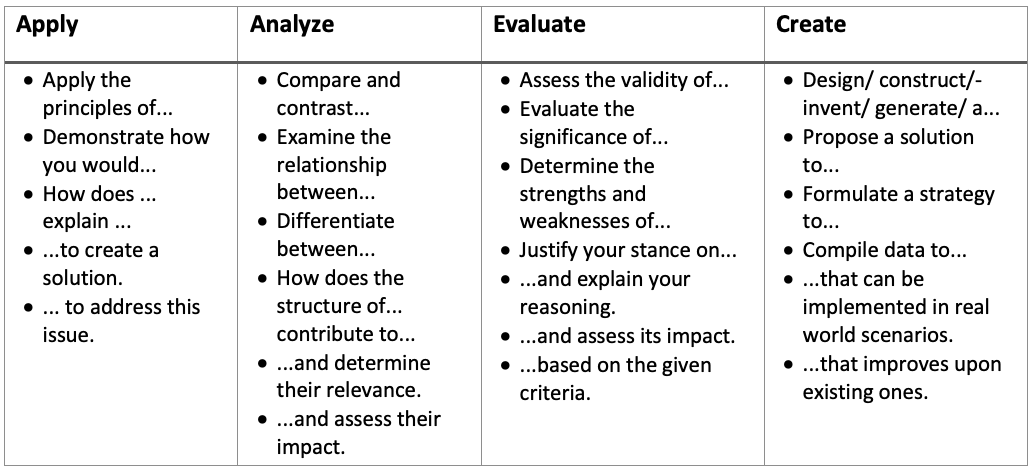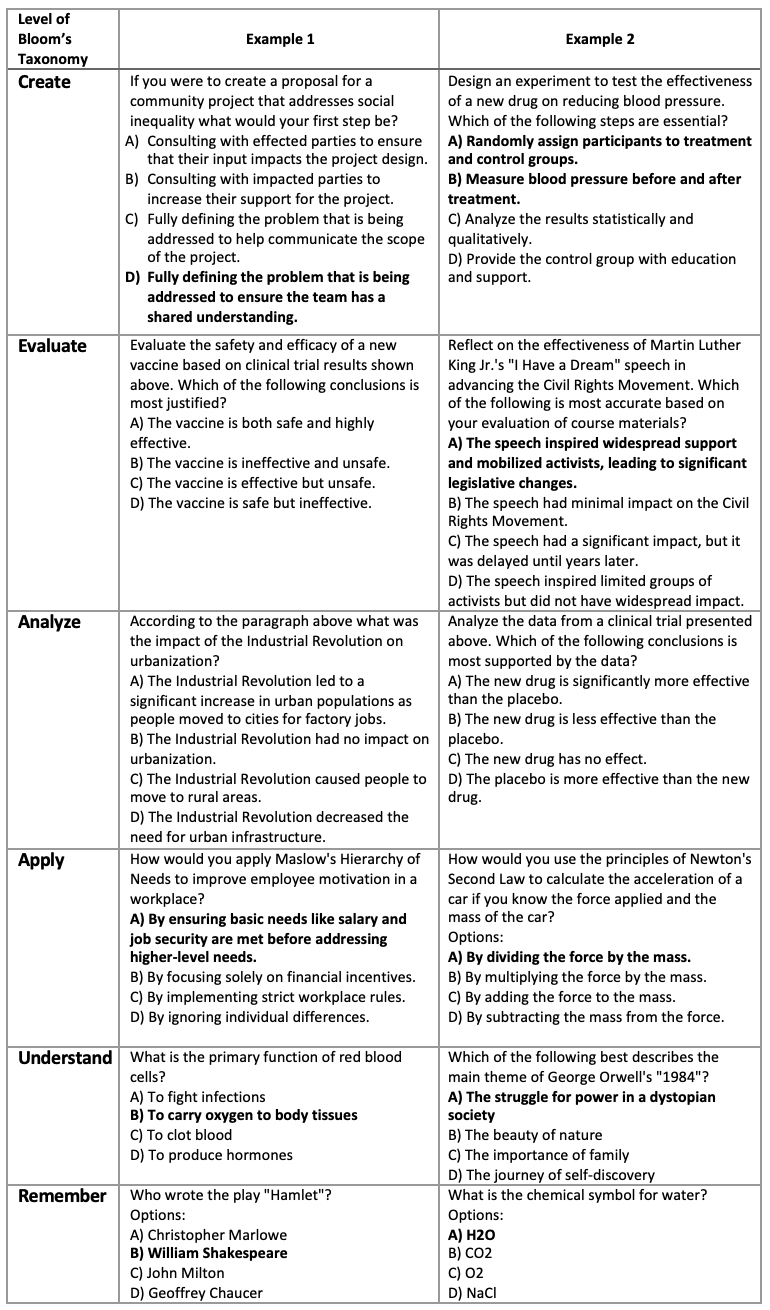Creating Multiple Choice Questions that Assess Higher Order Thinking
Make the most of your multiple-choice questions by moving beyond assessing understanding to analysis, evaluation, and beyond.
By Gwenna Moss Centre for Teaching and LearningWhen we think about writing exam questions, it is generally easier to create questions that assess students’ ability to remember or understand information, especially in a multiple-choice format. However, our goals for university students go beyond mere understanding. We want them to apply information in various contexts, critically analyze and evaluate what they learn, and ultimately create new work.
One tool to help us do this is Bloom's Taxonomy, a widely recognized framework for understanding the levels of thinking students use in their learning. Bloom's Taxonomy has evolved over time, but the current version outlines a progression of cognitive levels. It starts with the most basic level, "remember," and increases in complexity through "understand," "apply," "analyze," "evaluate," and finally, the most advanced level, "create."
To reach higher levels of thinking, students need consistent practice, including in their assessments. Research shows that students assessed at higher levels of Bloom's Taxonomy develop better critical thinking skills than those assessed at basic levels (Renaud & Murray, 2007). Despite this, it's common to find courses where learning outcomes focus on what students can do, but exam questions only test what they know. This mismatch means we can't be sure if students truly meet the course learning outcomes. As a result, students may progress through a program based on their knowledge without being able to effectively apply it.
By aligning exam questions with higher-order thinking skills, we can better prepare students for real-world challenges and ensure they achieve the intended learning outcomes. This can be done using strategies from the sections below.
Upping the Ante
To get our questions out of those most basic levels we can consider trying the following:
- Use specific examples and get students to apply concepts to these situations.
- Consider using open ended question types rather than multiple choice or true and false.
- Ask questions that get students to link or compare one concept with another.
- Ask about the “why” or possibly the “how”.
- Have students determine a plan or course of action.
- Use hypothetical questions that require the application of a course concept.
It may also be helpful to build questions that incorporate some of the language below:

Some specific strategies for multiple choice questions:
Multiple choice exams can be a challenging context to assess higher level thinking. Here are some ways to take your multiple-choice questions to the next level:
- Provide a detailed prompt or scenario and then ask a number of questions about it. This will allow students to apply their understanding to a specific situation.
- Provide a visual or graphic prompt and have students predict or interpret.
- When providing an example or prompt, ask students to identify the theoretical construct or principle associated with parts of the prompt.
- Provide response options that represent the correct answer as well as why the answer is correct so that students must engage in a reasoning process, rather than just recall a fact.
If you are not sure what level of cognition your current exam questions are at you may want to check out this auditing tool. Finally, reviewing the examples below may help you get a sense of how to craft questions at each level of Bloom’s Taxonomy:

Resources:
Brame, C. (2022). Writing higher order multiple choice questions. Vanderbilt University Center for Teaching. Retrieved from https://cft.vanderbilt.edu/writing-higher-order-multiple-choice-questions/.
Renaud, R. D., & Murray, H. G. (2007). The validity of higher-order questions as a process indicator of educational quality. Research in Higher Education, 48, 319–351. https://doi.org/10.1007/s11162-006-9028-1
Title image credit: Monstera Production on Pexels
This article was created with the assistance of AI tools, as described in the GMCTL AI Disclosure Statement.

